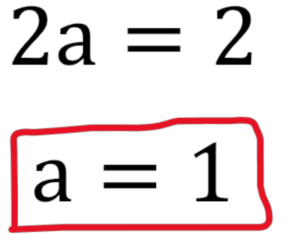Quadratic Sequence: GCSE Questions, Examples with and Worksheet
Quadratic Sequence
- Quadratic sequences represent a captivating area of mathematical study, offering a window into the enchanting world of patterns, equations, and numerical relationships.
These sequences, defined by their quadratic nature, are a cornerstone of algebra, serving as a crucial tool for modelling real-world phenomena and solving mathematical puzzles.
In this article, we will discuss:
- What is a Quadratic Sequence?
- The formula for Quadratic Sequence?
- Finding the nth term of a Quadratic Sequence?
Here is one more link to practice a few extra questions: Maths Genie Quadratic Sequence Questions
What is a Quadratic Sequence?
- Quadratic sequences are mathematical sequences where the difference between the terms is not constant.
- In contrast to linear sequences, where the difference is constant, quadratic sequences have constant differences between the differences of their terms.
- This means that the sequence of first differences is a linear sequence.
- Let’s take an example to understand this better:
Sequence: 1, 4, 9, 16, 25, …
1st Differences: 3, 5, 7, 9, …
2nd Differences: 2, 2, 2, …

- As we can see, the differences between the terms are not constant, but the differences between the first differences are constant. Therefore, we can conclude that this is a quadratic sequence.
Practice Questions
Question 1: Find the next three terms in the quadratic sequence: 2, 6, 12, 20, ...
Answer :Solution:
- Step #1: To find the next terms, observe the differences between consecutive terms:
6 - 2 = 4,
12 - 6 = 6,
20 - 12 = 8.
- Step #2: The differences are increasing by 2 each time, so the next differences would be 10, 12, 14.
- Step #3: Adding these differences to the last term of the sequence:
20 + 10 = 30,
30 + 12 = 42,
42 + 14 = 56.
- Step #4: Therefore, the next three terms are 30, 42, 56.
Question 2: Find the next three terms in the quadratic sequence: 4, 13, 25, ...
Answer :Solution:
- Step #1: To find the next terms, observe the differences between consecutive terms:
13 - 4 = 9,
25 - 13 = 12.
- Step #2: The differences between consecutive terms are not constant, suggesting a non-linear pattern.
- Step #3: However, let's examine the differences between the differences:
12 - 9 = 3.
- Step #4: The difference between the differences is constant at 3.
- Step #5: Adding this difference to the last difference, we get:
12 + 3 = 15.
- Step #6: Now, adding this difference to the last term of the sequence, we can find the next terms:
25 + 15 = 40,
40 + 15 = 55,
55 + 15 = 70.
- Step #7: Therefore, the next three terms in the sequence are 40, 55, 70.
Formula for Quadratic Sequence
- One can recognize and continue a quadratic sequence, and find the formula for the nth term of a quadratic sequence in terms of n.
The formula for the nth term of a quadratic sequence is in the form of
an = an2 + bn + c.

We can use the following process to find a, b, and c.
Practice Questions
Question 1: Find the missing term in the quadratic sequence: 9, 16, ?, 36, 49.
Answer :Solution:
- Step #1: To find the missing term, we observe the differences between consecutive terms:
16 - 9 = 7,
36 - 16 = 20,
49 - 36 = 13.
- Step #2: We can see that the differences are not constant, so this is not a linear sequence.
- Step #3: However, if we consider the differences between the differences:
20 - 7 = 13.
- Step #4: The difference between the differences is constant at 13.
- Step #5: Adding this difference to the last difference, we get:
13 + 20 = 33.
- Step #6: Now, adding this difference to the last term of the sequence, we can find the missing term:
36 + 33 = 69.
- Step #7: Therefore, the missing term in the sequence is 69.
Question 2: Find the sum of the first 5 terms in the quadratic sequence: 2, 5, 10, 17, ...
Answer :Solution:
- Step #1: To find the sum of the first 5 terms, we can use the formula for the sum of an arithmetic series.
- Step #2: The nth term of this quadratic sequence can be written as n2 + 1.
- Step #3: Substituting n = 1, 2, 3, 4, 5 into the formula, we get:
12 + 1 = 2,
22 + 1 = 5,
32 + 1 = 10,
42 + 1 = 17,
52 + 1 = 26
- Step #4: The sum of these terms can be found by adding them up:
2 + 5 + 10 + 17 + 26 = 60
- Step #5: Therefore, the sum of the first 5 terms in the sequence is 60.
Finding the nth term of a Quadratic Sequence
Step #1: Find the sequence of first and second differences
- Note: Make sure that the first differences are not constant and the second differences are constant to ensure that it is a quadratic sequence.
Let’s consider the following example:
Sequence: 2, 4, 8, 14, 22, …
1st Differences: 2, 4, 6, 8, …
2nd Differences: 2, 2, 2, …
As the second differences are constant, we can conclude that this is a quadratic sequence

Step #2: Determine a, the second difference, by dividing the second difference by 2.
- In the above example, a = 2/2 = 1.

Step #3: Write out the first three or four terms of an2 with the first three or four terms of the given sequence underneath.
an2 = 1, 4, 9, 16, …

Step #4: Work out the difference between each term of an2 and the corresponding term of the given sequence.

Step #5: Work out the linear nth term of these differences.
This is bn + c.
In the above example, we get:
bn + c = n + 2.

Step #6: Add this linear nth term to an2 to obtain the nth term of the quadratic sequence.
In the above example, we have the nth term of the quadratic sequence as
an2 + bn + c = n2 – n + 2

Exam Tips...
- Before finding the nth term of a quadratic sequences, compare it to the sequence of square numbers (1, 4, 9, 16, 25, …) and look for a formula.
- For example, in the sequence 4, 7, 12, 19, 28, …, each term is 3 more than the corresponding square number.
- Comparing sequences to known patterns like square numbers can help identify formulas and simplify the process of finding the nth term.
Practice Questions
Question 1: Find the nth term of the quadratic sequence: 6, 15, 28, 45, ...
Answer :Solution:
- Step #1: To find the nth term, observe the differences between consecutive terms:
15 - 6 = 9,
28 - 15 = 13,
45 - 28 = 17.
- Step #2: The differences are increasing by 4 each time.
- Step #3: Therefore, the next differences would be 21, 25, 29.
- Step #4: Now, let's find the differences between the differences:
13 - 9 = 4,
17 - 13 = 4, ...
- Step #5: The differences between the differences are constant at 4.
- Step #6: Therefore, the general formula for this quadratic sequence is given by nth term
= 2n2 + 4n.
Question 2: Find the missing term in the quadratic sequence: 2, 8, ?, 32, 50.
Answer :Solution:
- Step #1: To find the missing term, observe the differences between consecutive terms:
8 - 2 = 6,
32 - 8 = 24,
50 - 32 = 18.
- Step #2: The differences are not constant, indicating a non-linear sequence.
- Step #3: However, consider the differences between the differences:
24 - 6 = 18.
- Step #4: The difference between the differences is constant at 18.
- Step #5: Adding this difference to the last difference, we get:
18 + 24 = 42.
- Step #6: Now, adding this difference to the last term of the sequence, we find the missing term:
32 + 42 = 74.
- Step #7: Therefore, the missing term in the sequence is 74.
Worksheet on Quadratic Sequence
Question 1: Find the sum of the first 6 terms in the quadratic sequence: 3, 9, 19, 33, ...
Question 2: Find the nth term of the quadratic sequence: 1, 6, 15, 28, ...
Question 3: Find the missing term in the quadratic sequence: 4, 13, ?, 37, 52.
Question 4: Find the sum of the first 8 terms in the quadratic sequence: 2, 7, 16, 29, ...

